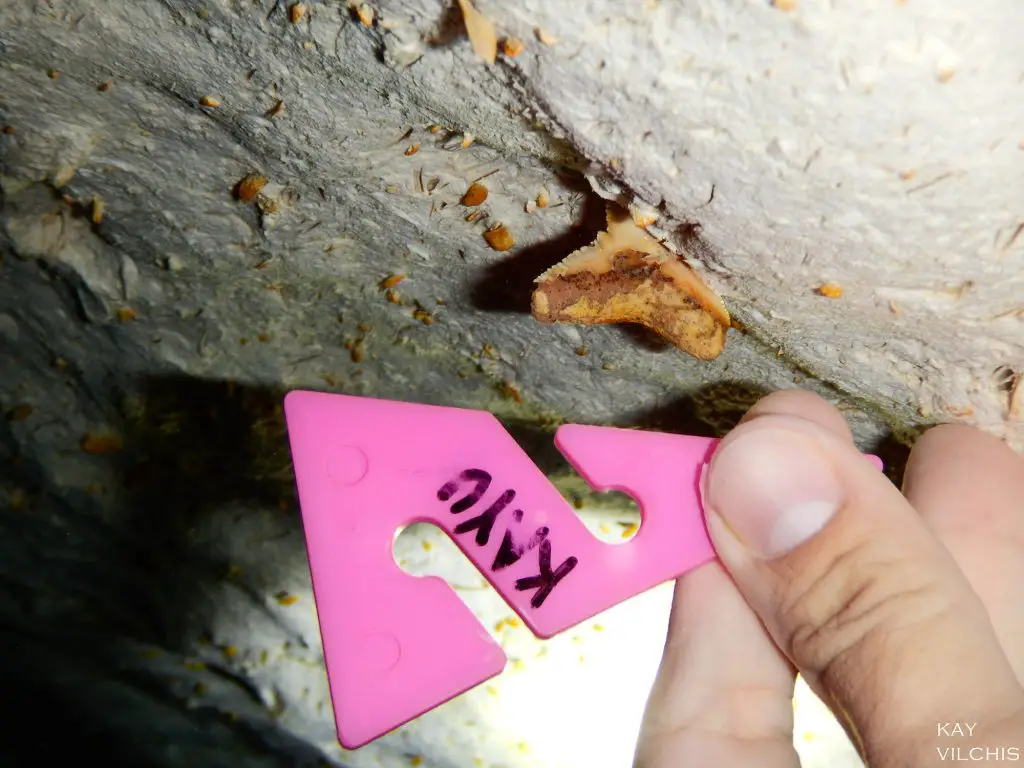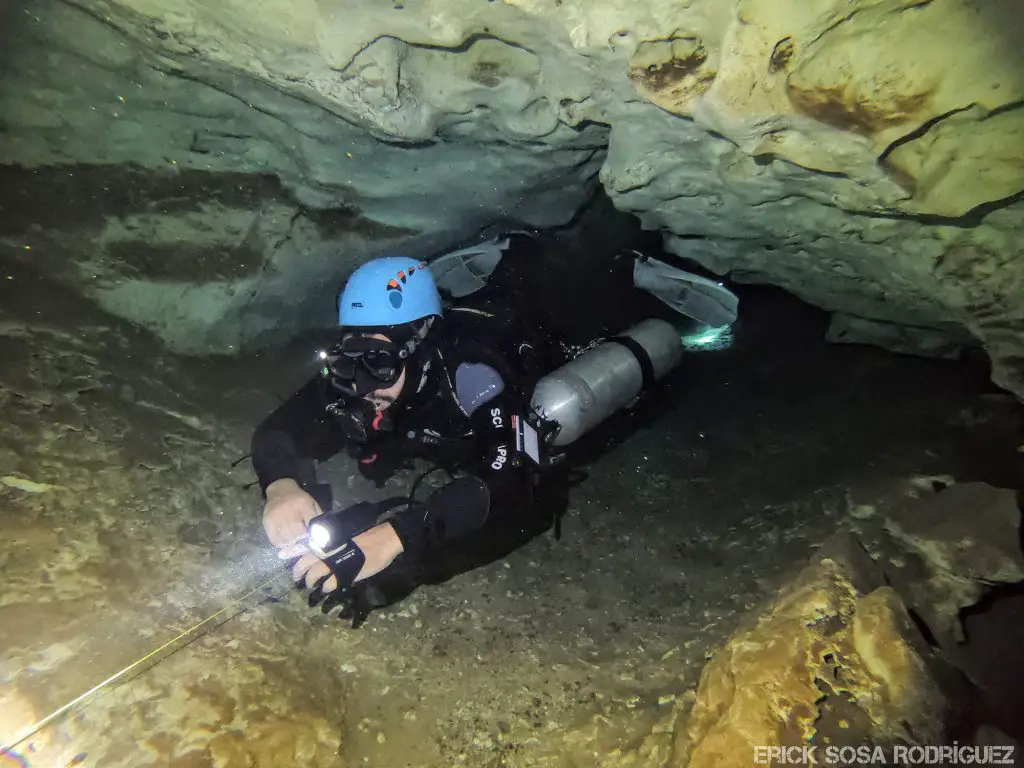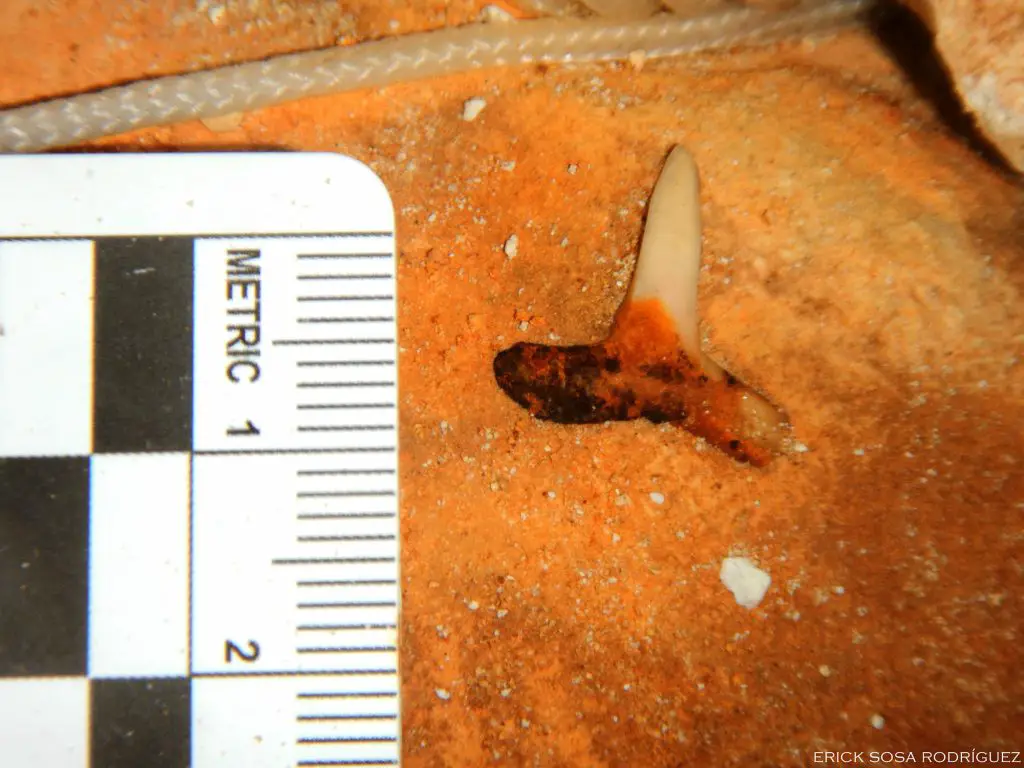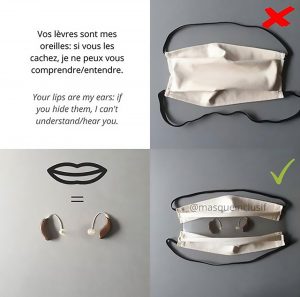Story By: Jonathan Macias, Sub Editor: Joseph Golder, Agency: Central European News
This is the moment two divers find thirteen teeth which are believed to belong to three different species of sharks including a megalodon which existed over 2.5 million years ago.
The teeth were found together with other types of fossils in the Xoc (shark in the Mayan language) cenote (a natural sinkhole) in the district of Cholul in Merida, the capital of the Mexican state of Yucatan in the Gulf of Mexico.
According to local media, speleologist and photographer Kay Nicte Vilchis Zapata and her partner Erick Sosa Rodriguez, also a speleologist, found fifteen dental fossils of different shapes and sizes, thirteen of which are believed to be shark teeth.

Reports said that the divers also found a fossilised vertebra that might have belonged to an extinct animal and fossilised human bones, all of them embedded in the walls of the sinkhole.
The footage shows the moment Vilichis Zapata finds a tooth and gives the ‘okay’ sign to show his excitement.
Zapata told local media: “We were looking at the wall and suddenly I saw a little something, I went closer and I saw that it was a tooth, that was the first and apparently it belonged to a sawshark.”

According to Vilichis, an initial exam of the thirteen shark dental fossils and their size and shape revealed that they might have belonged to the prehistoric and extinct species of megalodon shark (Carcharocles megalodon), the mackerel shark (Isurus oxyrinchus) and the sawshark, the last two of which are not extinct.
The fossils belong to the period of Pleiocene, the epoch in the geologic timescale that extended from 5 million to 2.5 million years ago, and the Miocene, an earlier geological epoch which extended between 23 and 5 million years ago.
Reports state the Xoc cenote is the largest in the city of Merida with a diameter of 620 metres (2,034 feet) and 28 metres (91 feet) deep.

Speleologist Sosa Rodriguez commented to local media: “It is just proof of what scientists have already studied and written about; what kind of wildlife lived here millions of years ago when this was part of the sea. The anthropologist and physicist Salvador Estrada has already launched an investigation.”
The ViralTab page is created by and dedicated to professional, independent freelance journalists. It is a place for us to showcase our work. When our news is sold to our media partners, we will include the link here.
Daily Mail – FoxNews – Daily Star – Express



